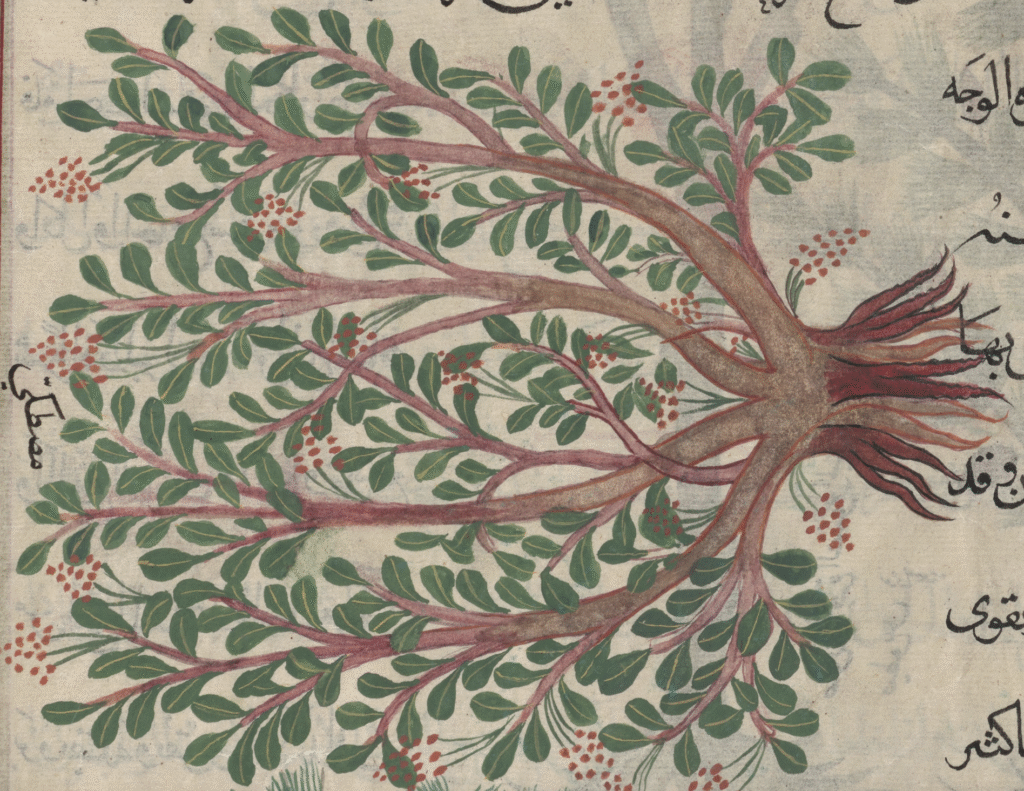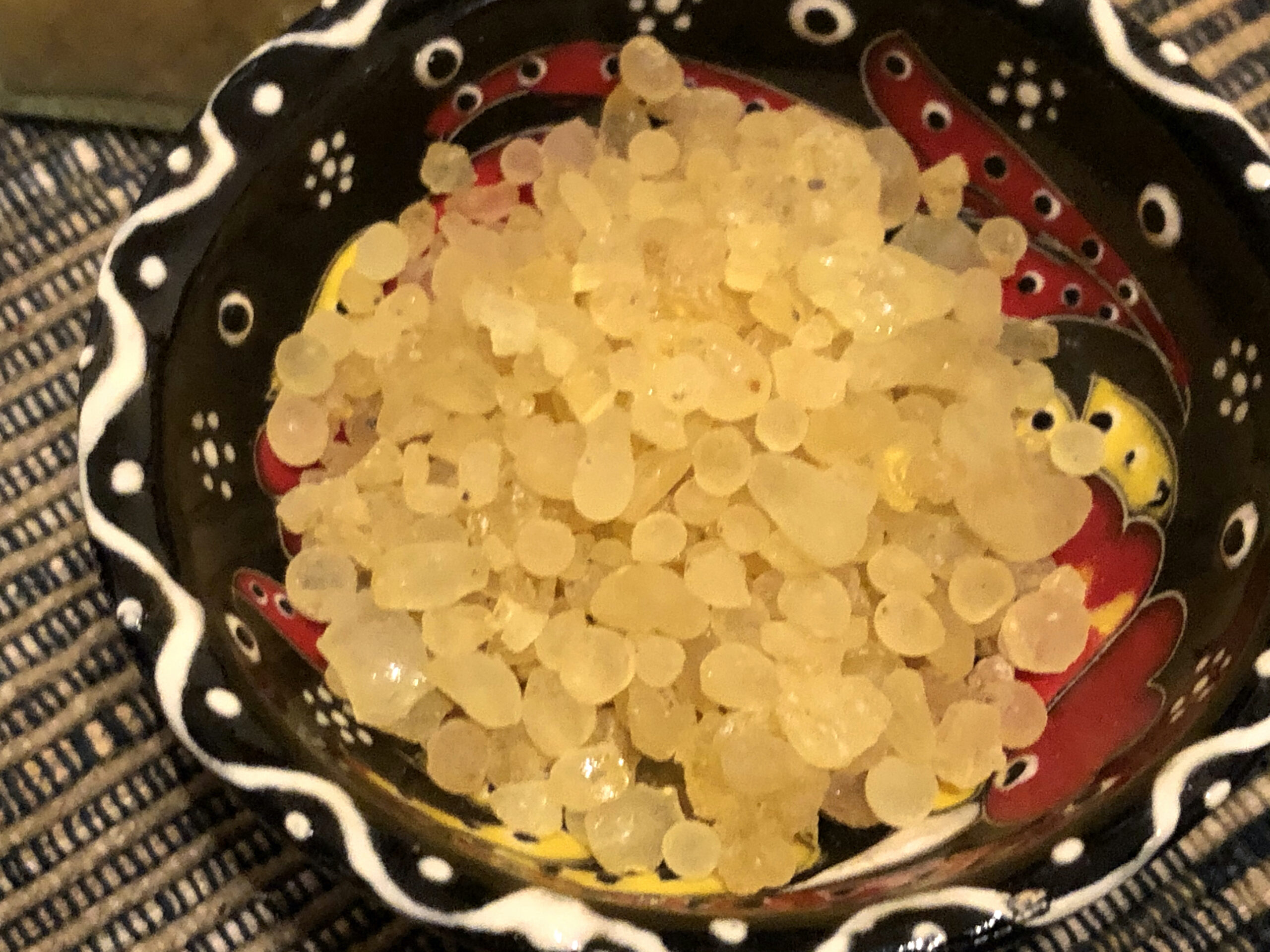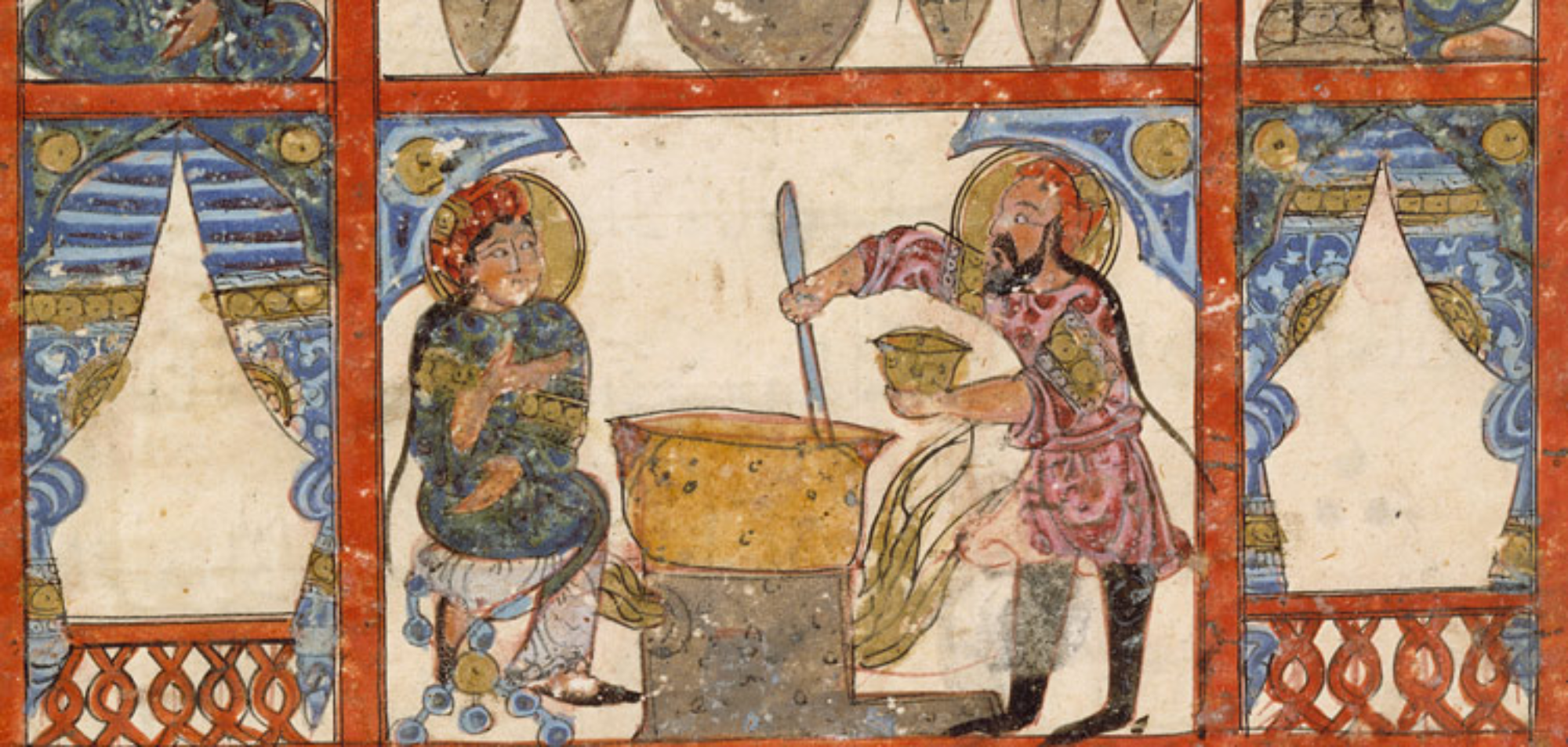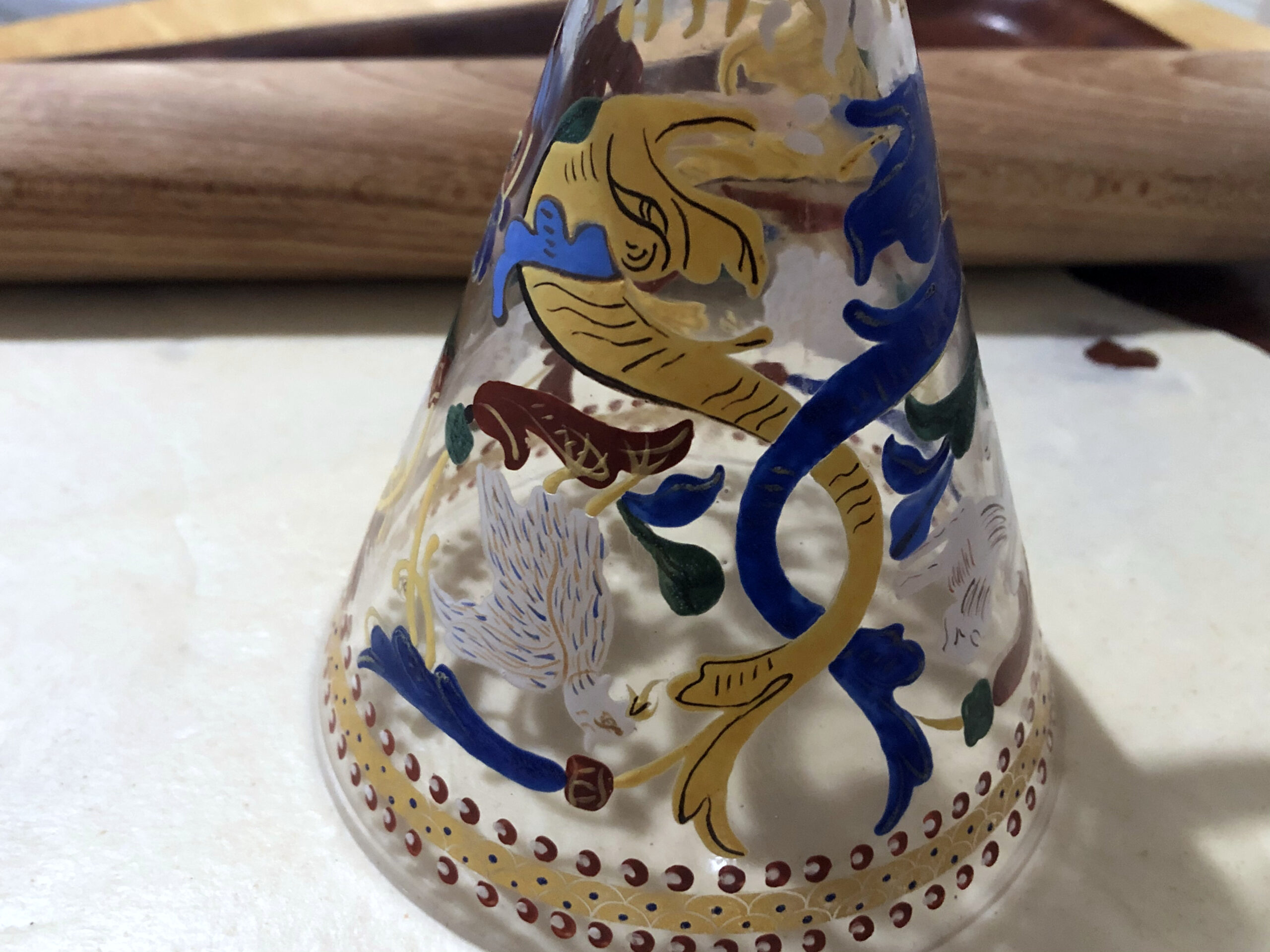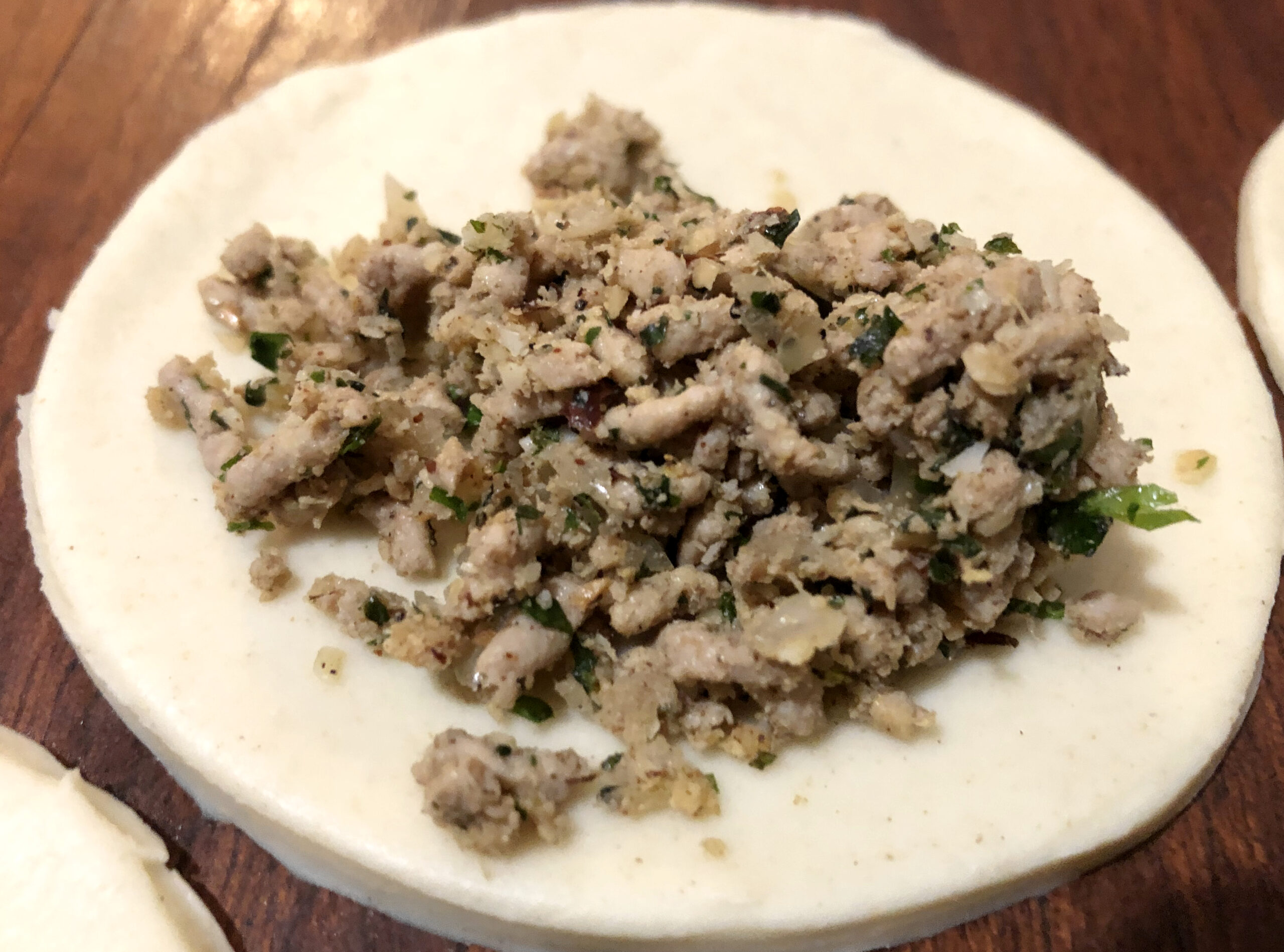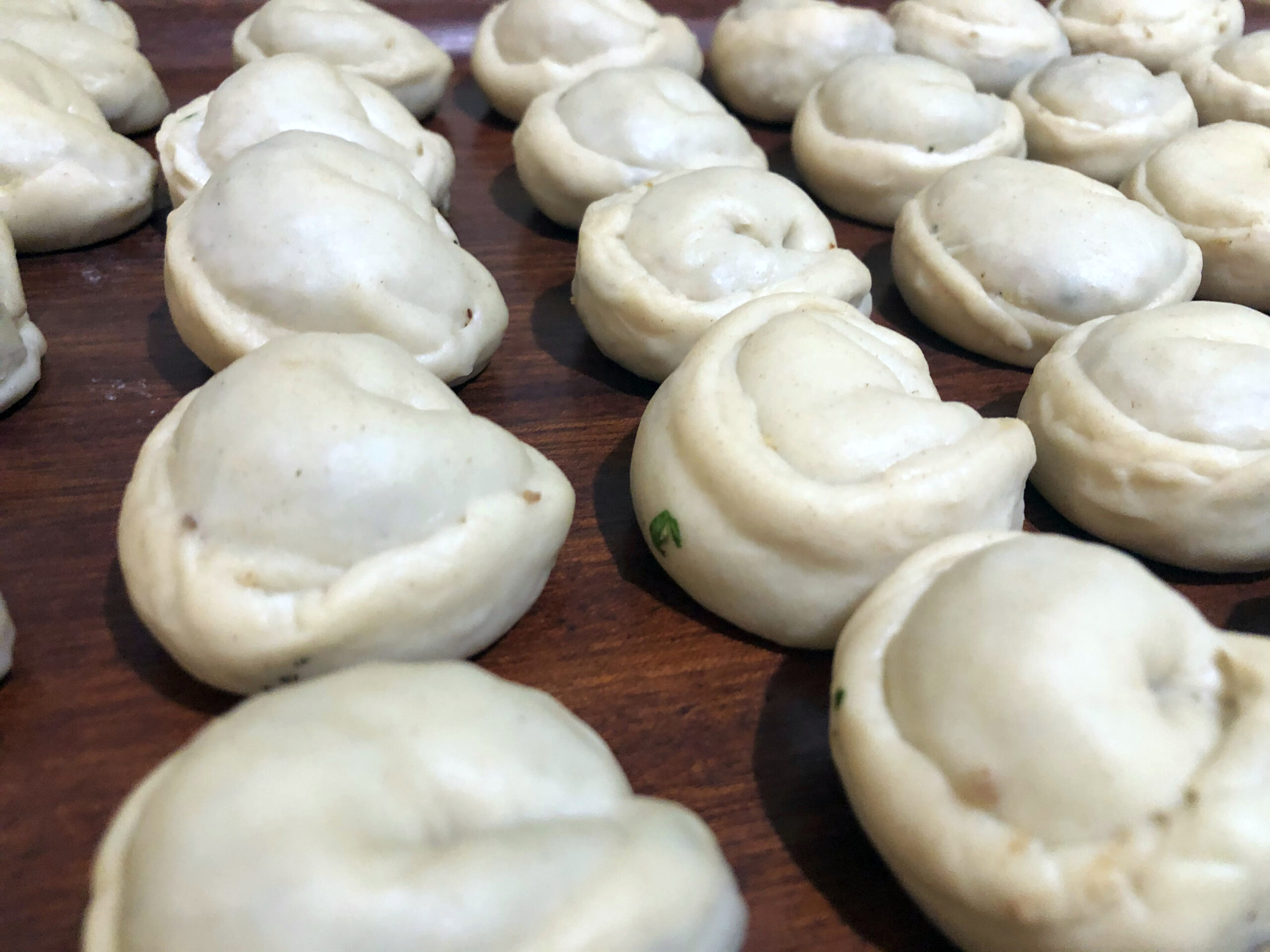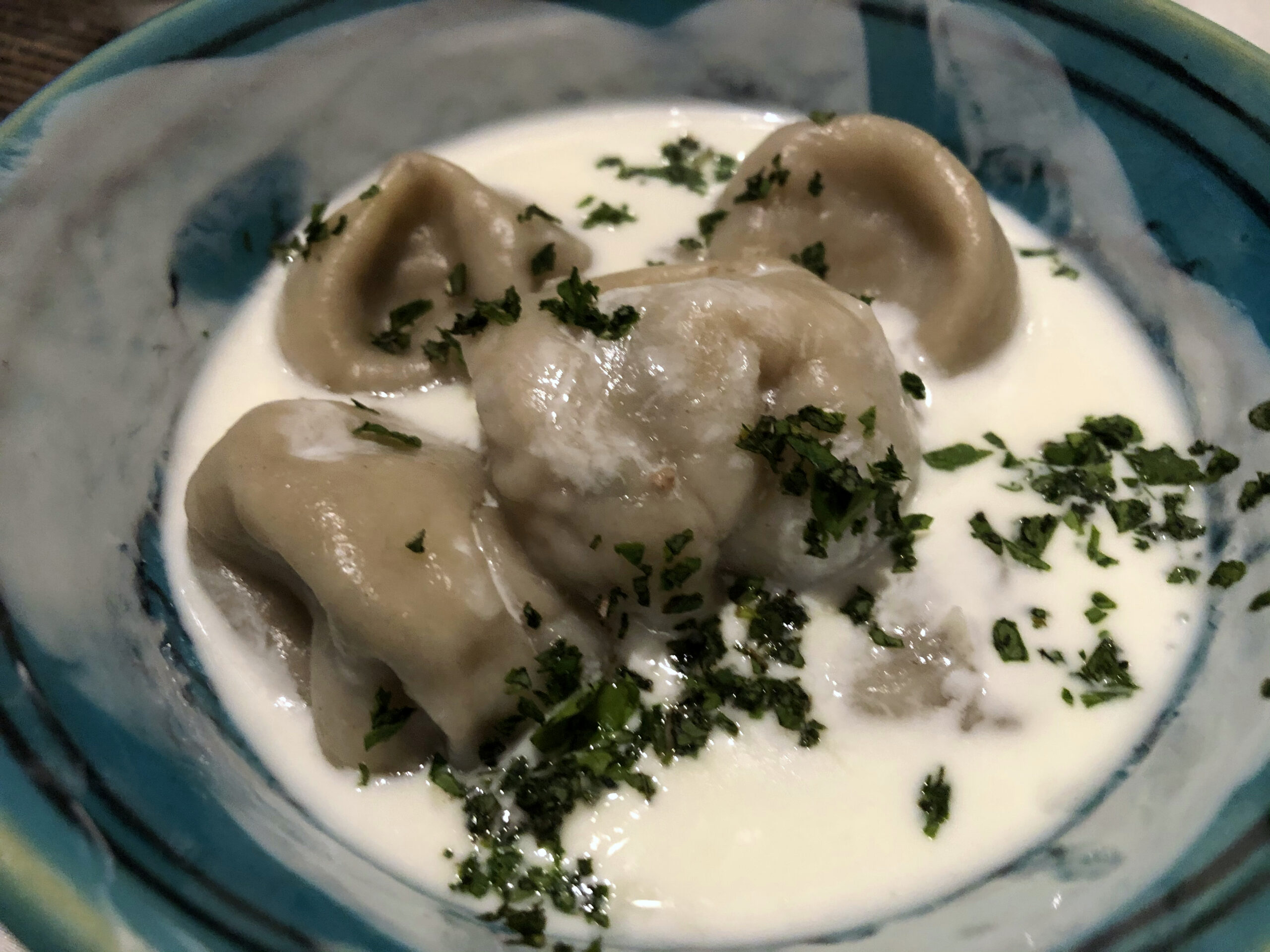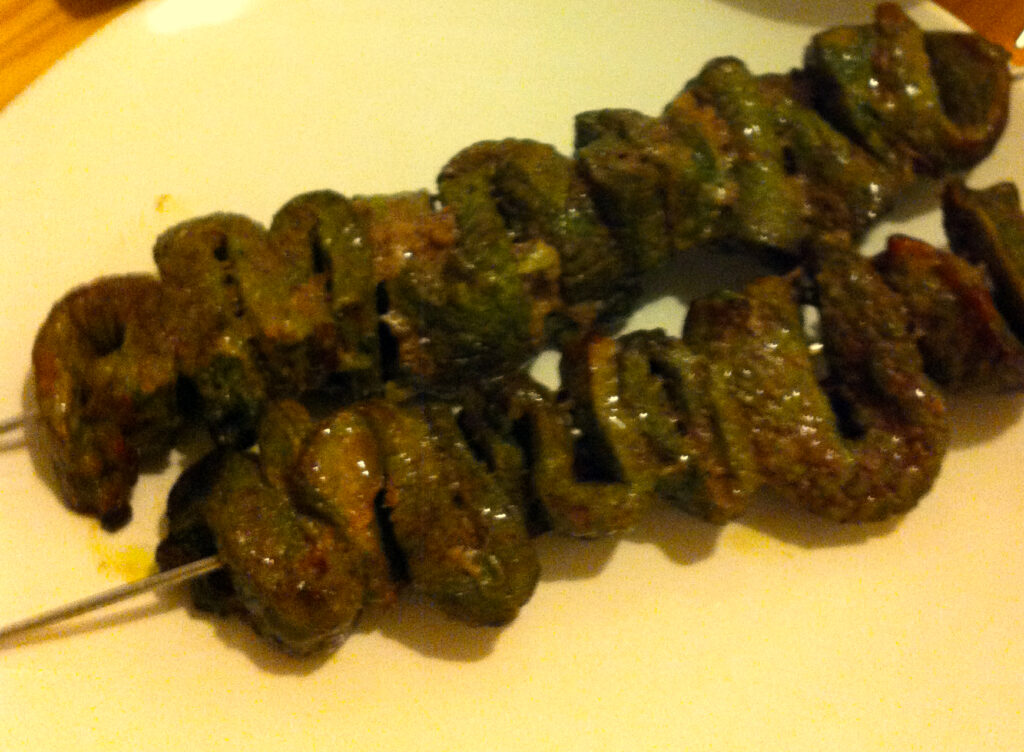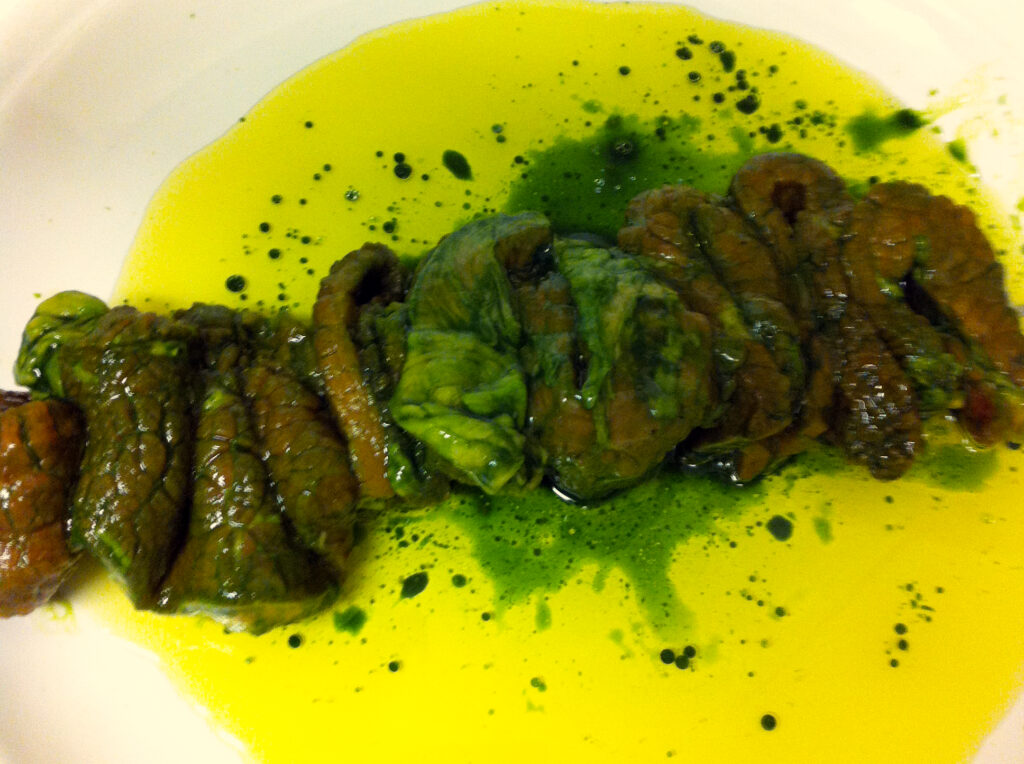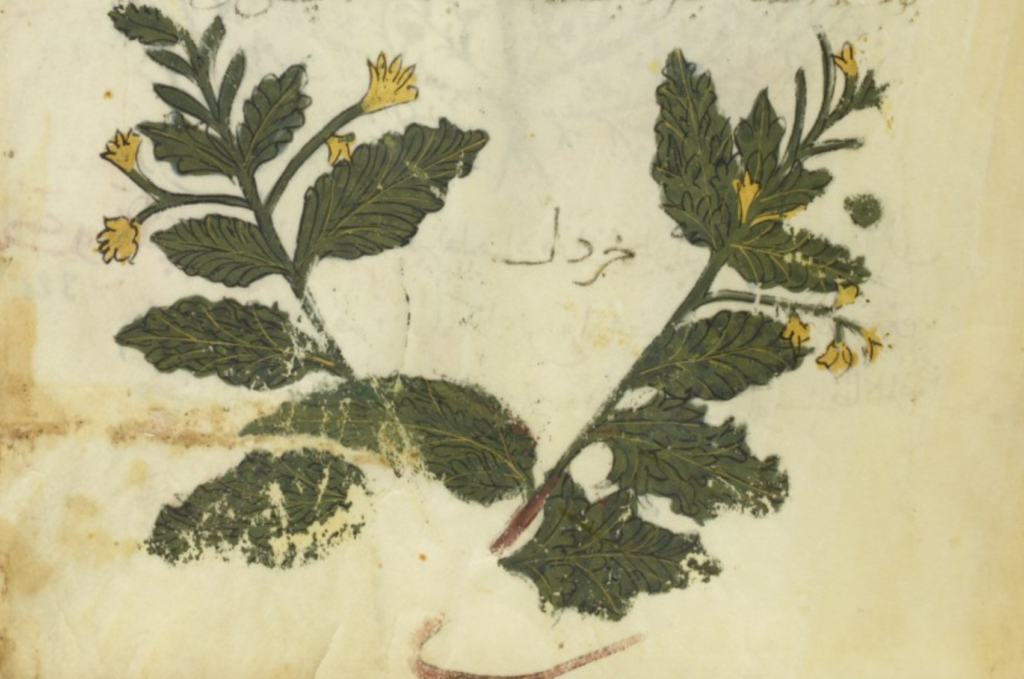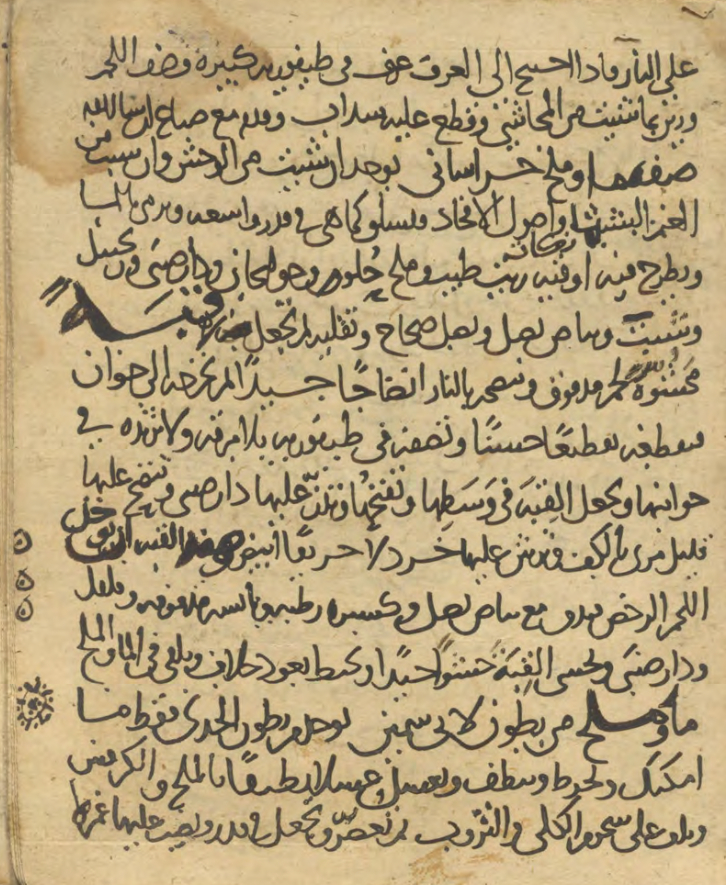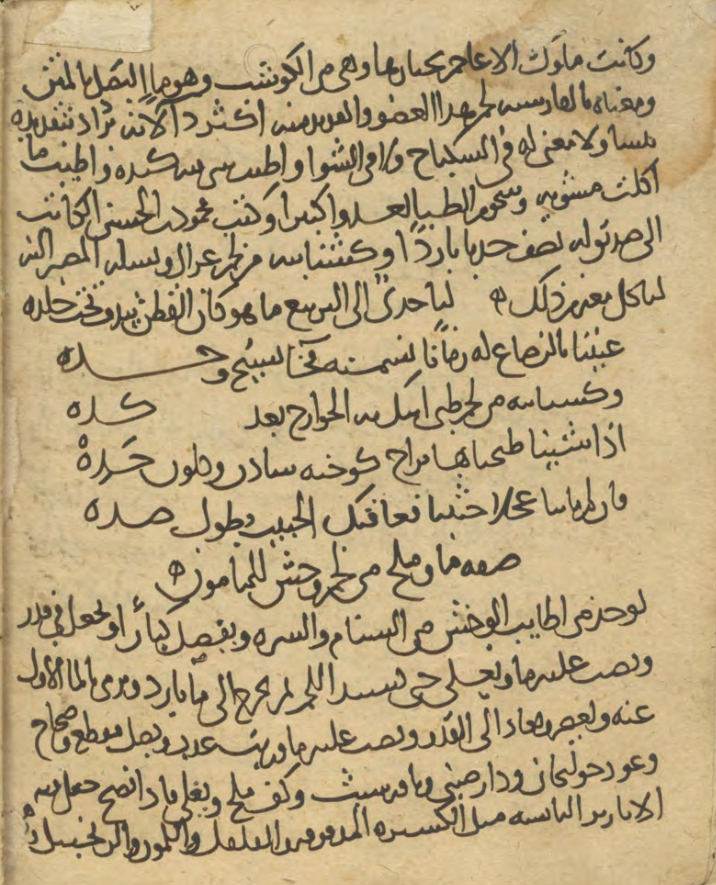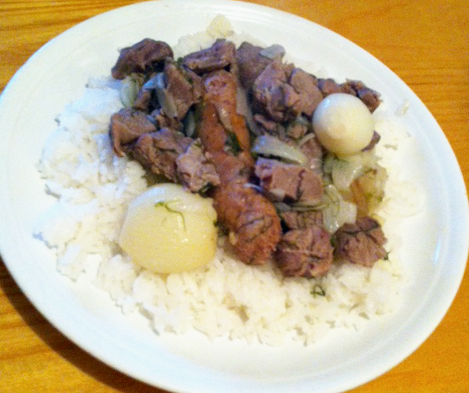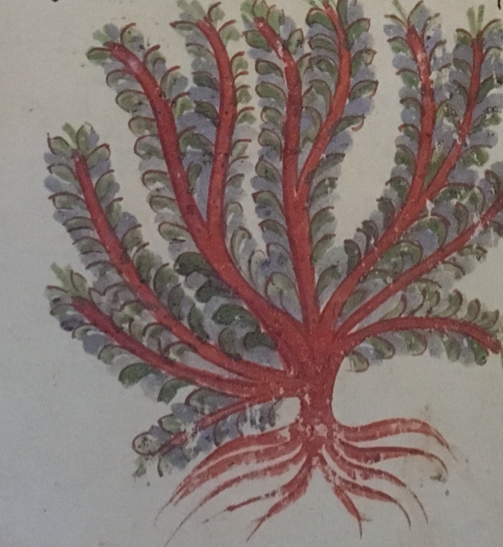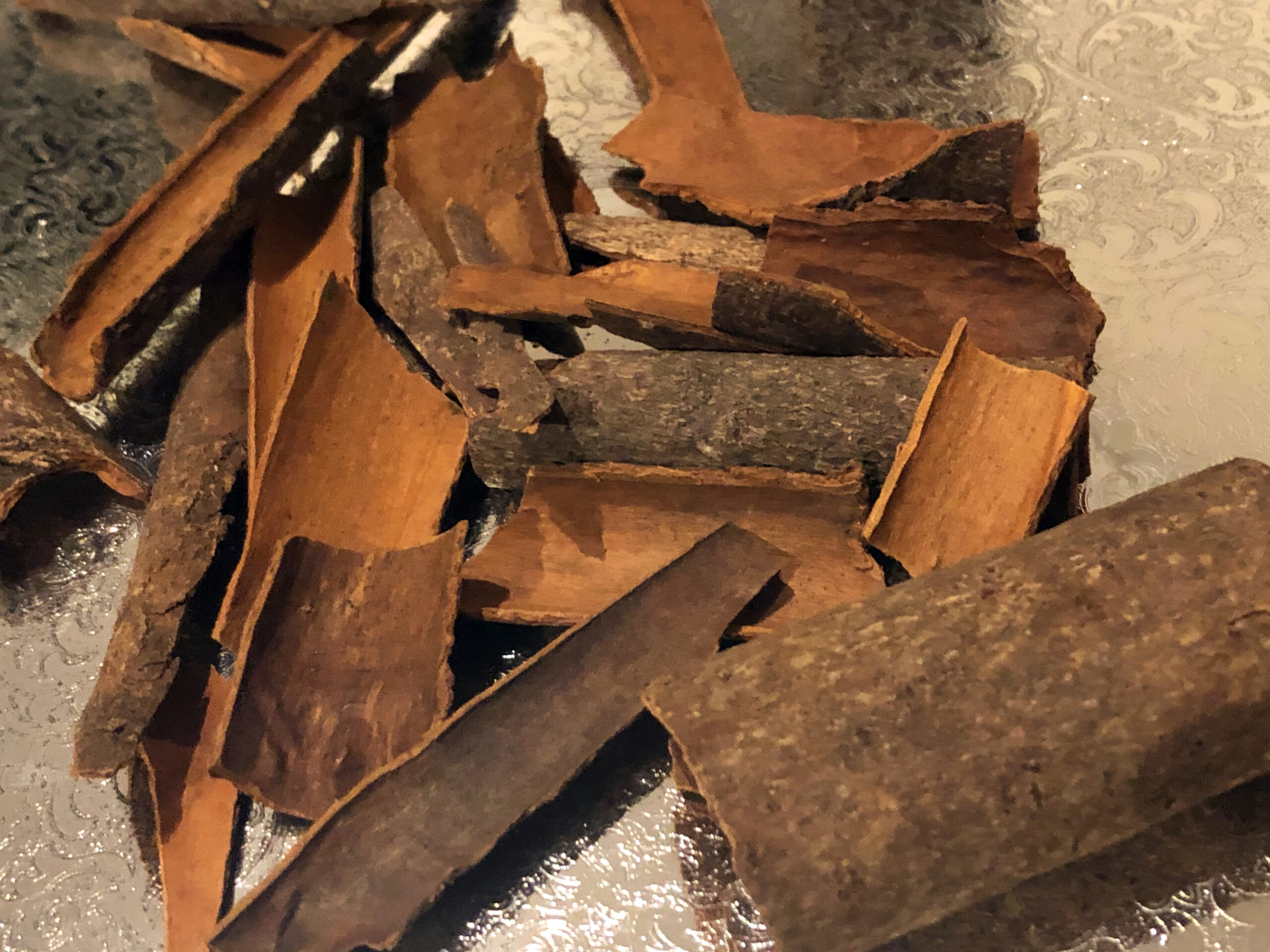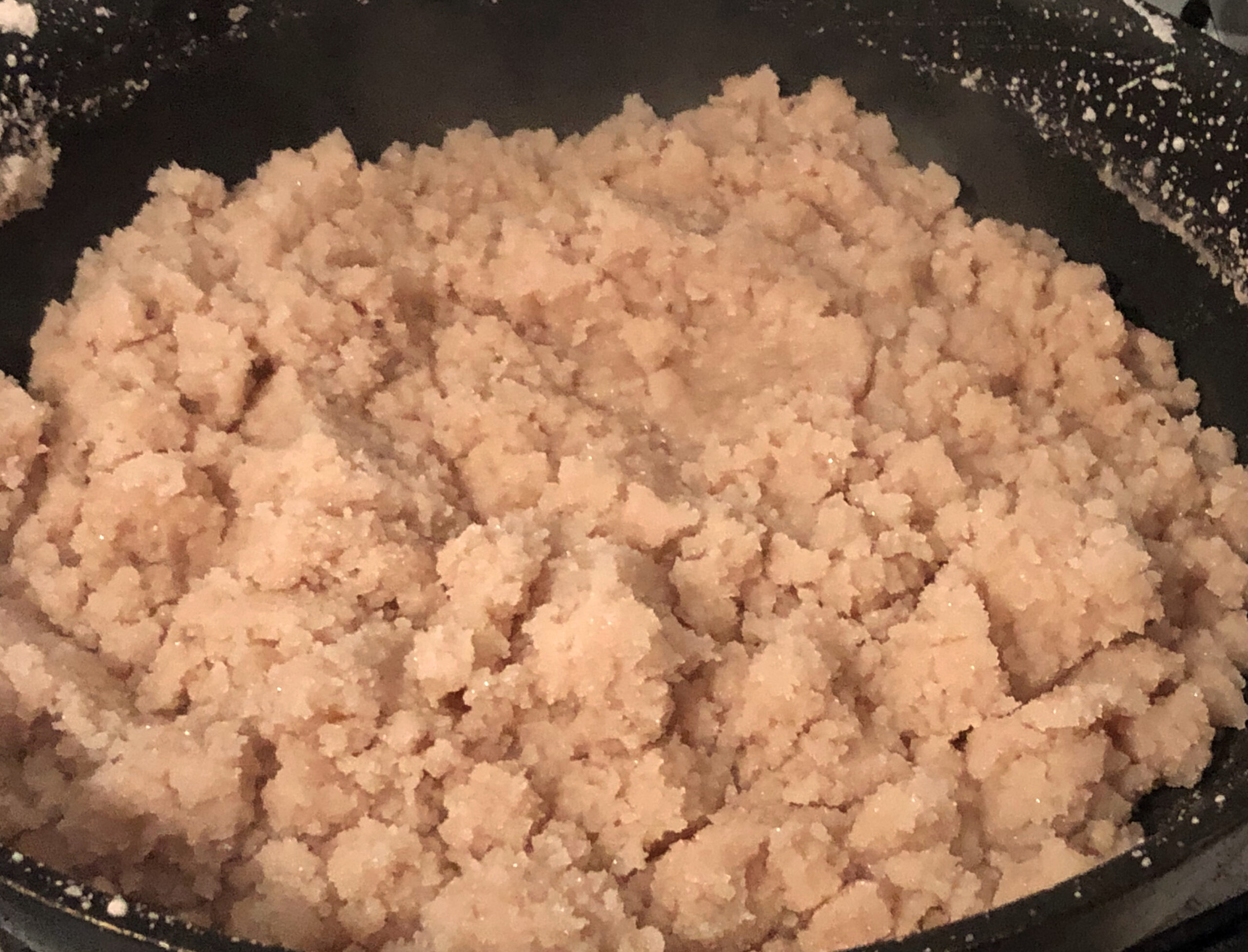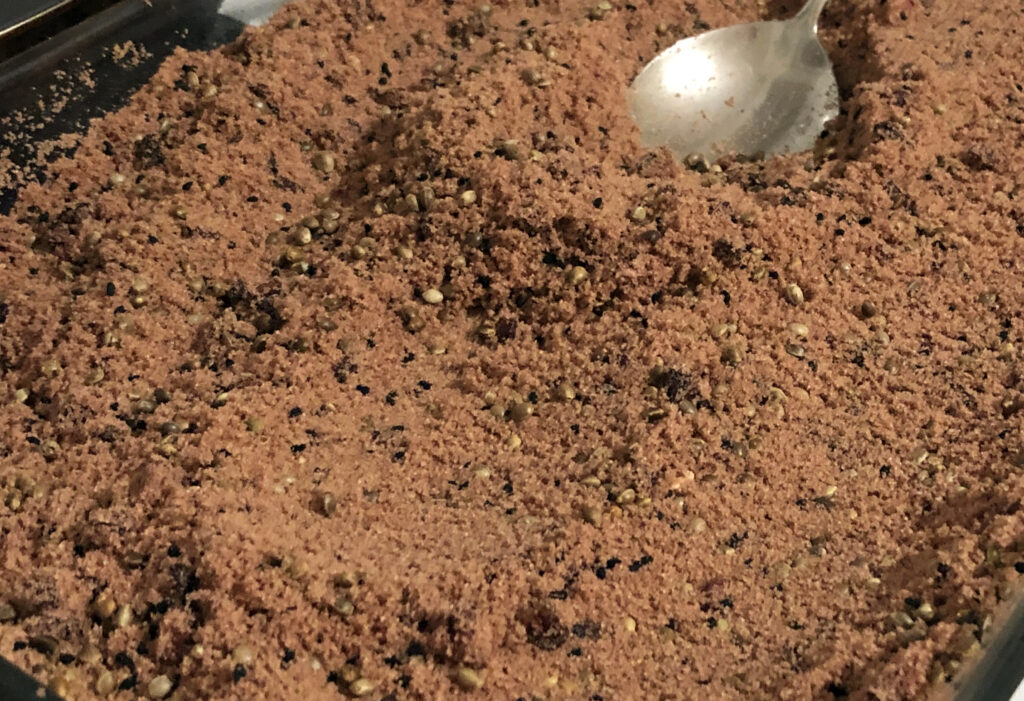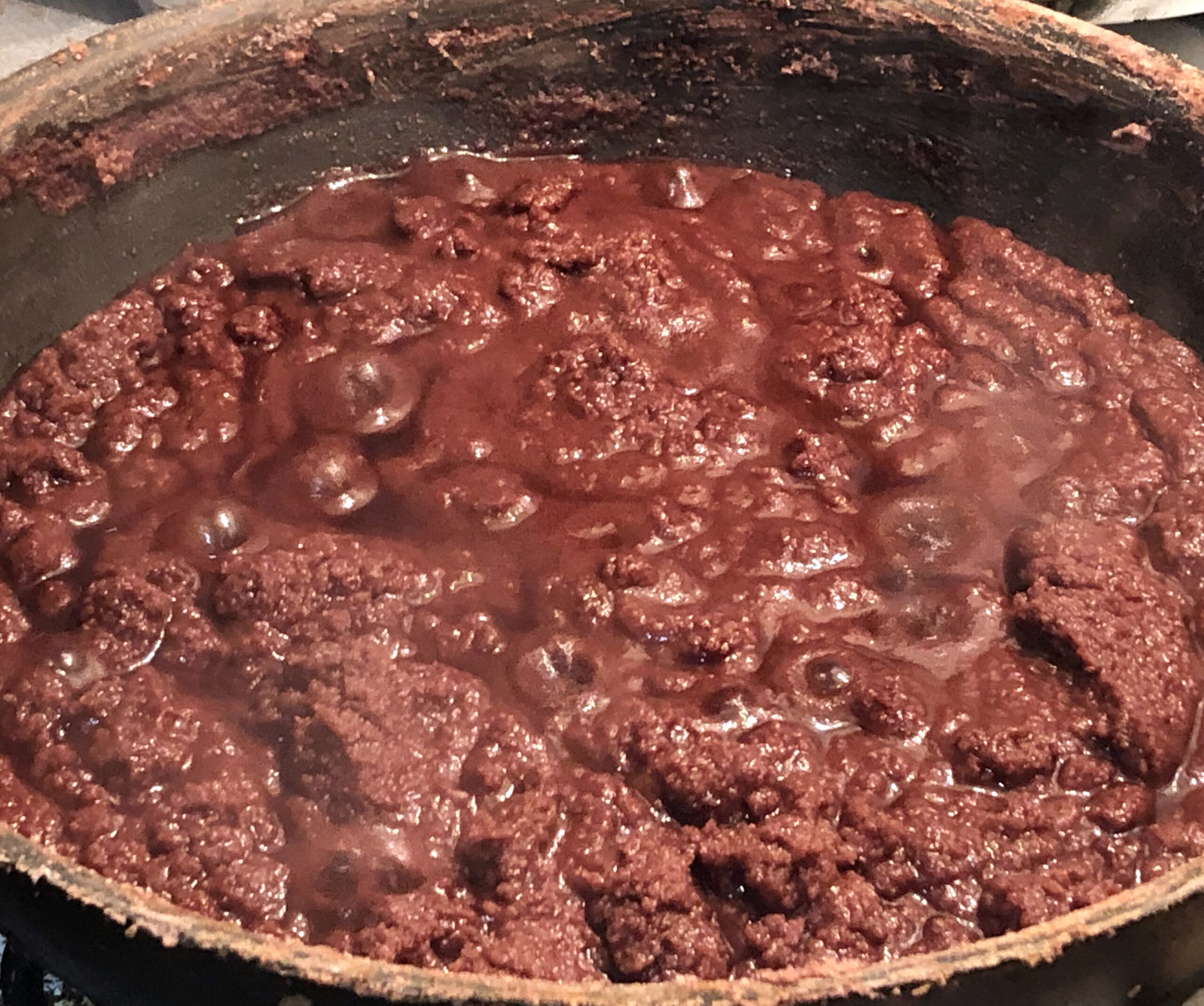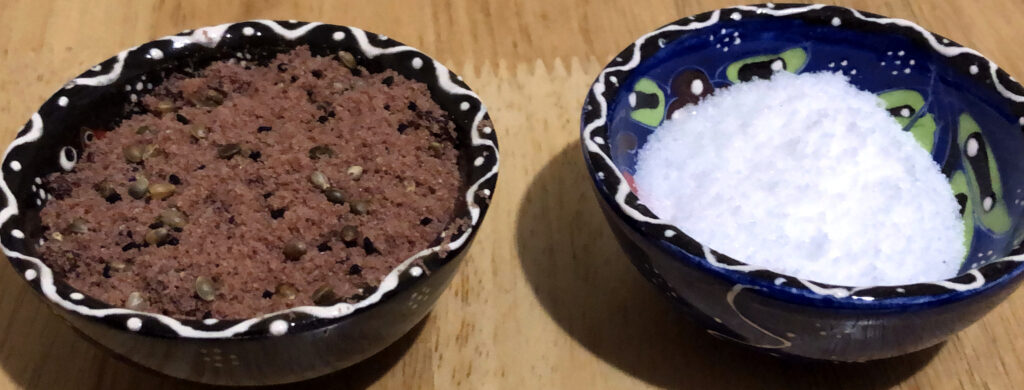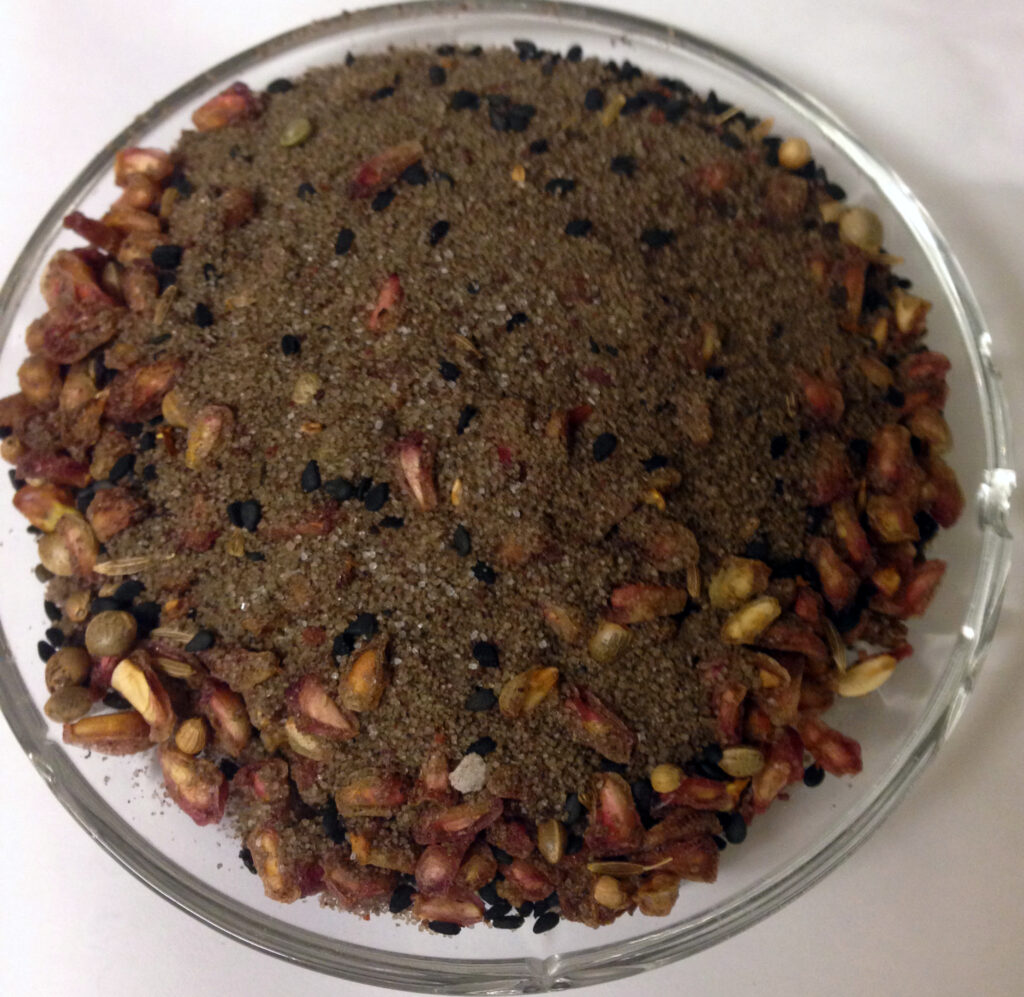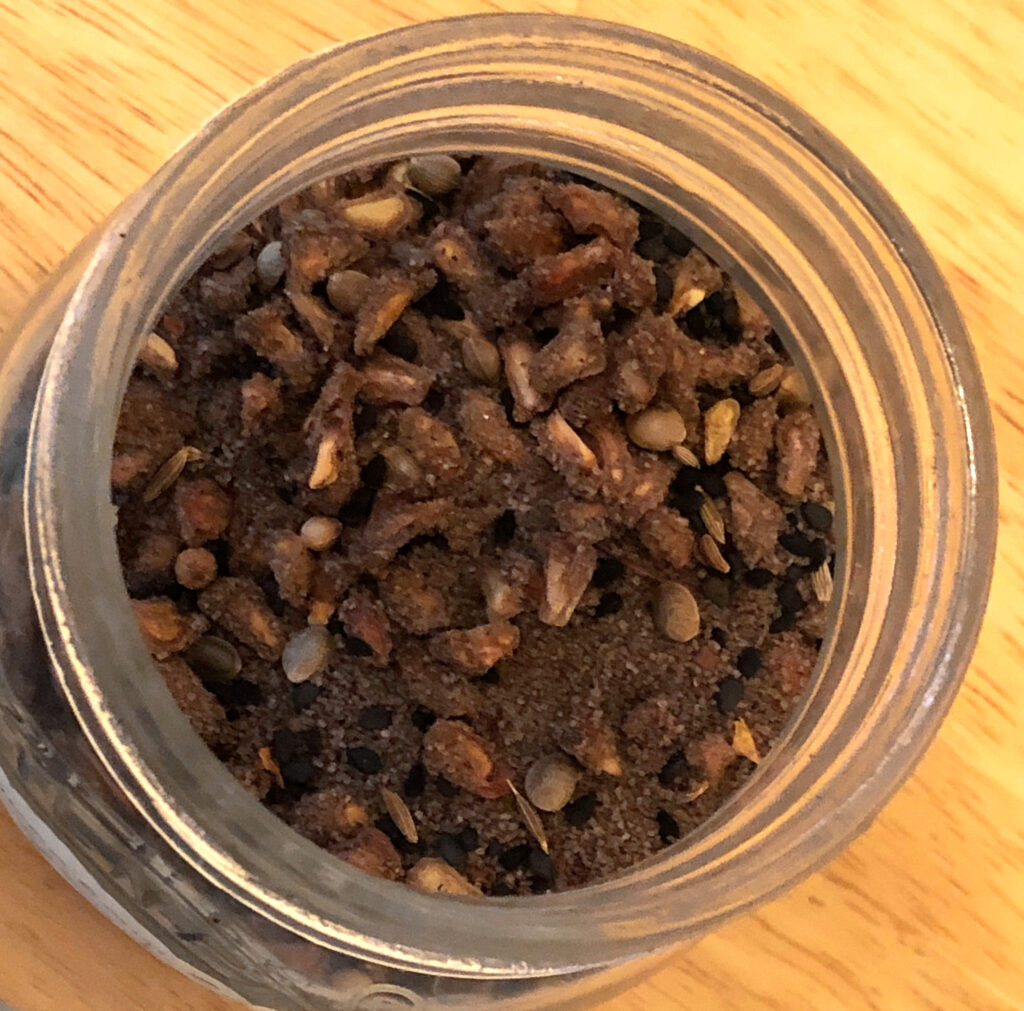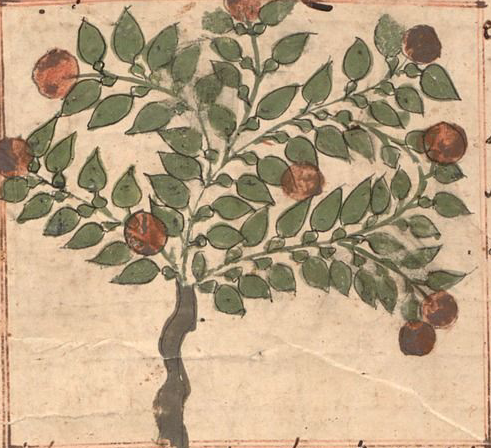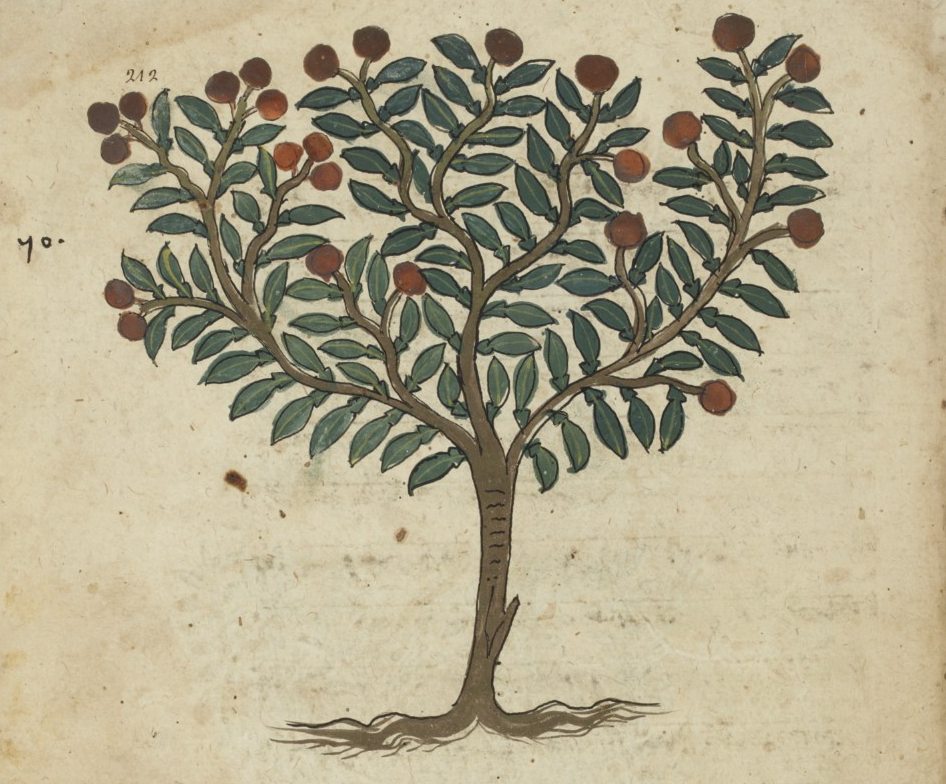The Arabic word maṣṭakā (or maṣṭikā) is a borrowing from the Greek mastíkē (μαστίχη), which is derived from a verb meaning ‘to chew’. Possibly the world’s oldest chewing gum, it is the aromatic dried resin of the pistachio tree (Pistacia lentiscus), and came in a number of varieties: yellow/white (ʿilk al-Rūm, ‘Greek gum’) and black (terebinth, mostly Egyptian or Iraqi in origin). In classical Antiquity, as now, mastic was associated with the island of Chios as the only place where it could be obtained.
In medieval Arab cooking, mastic was used in a variety of dishes, including fruit stews and sweets. The other main area of application was in perfumes. Islamic physicians believed it strengthens the stomach and liver, curbs appetite, and improves the appearance of the skin. Just like in ancient Greece, it was used as breath-sweetener and teeth cleanser.
